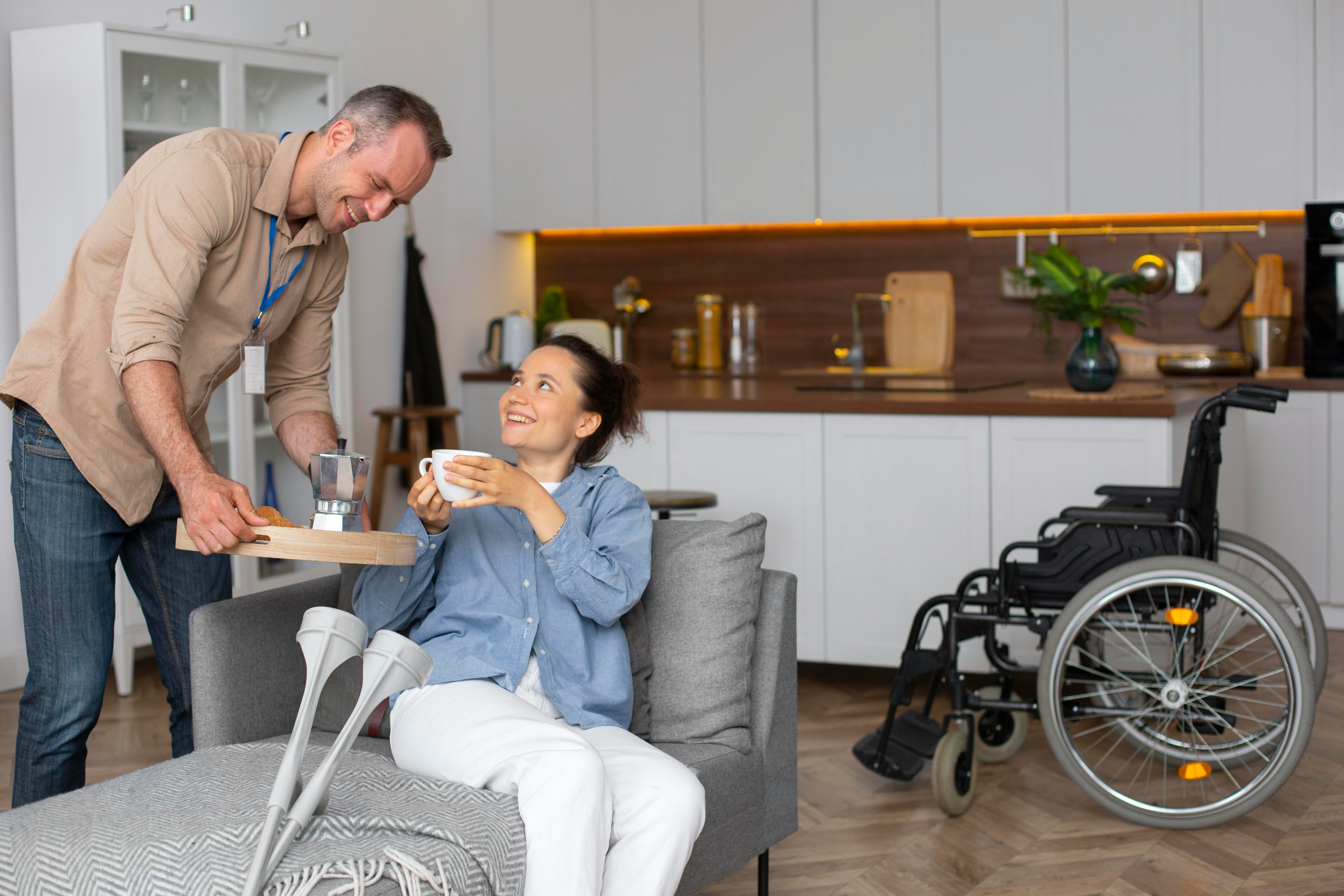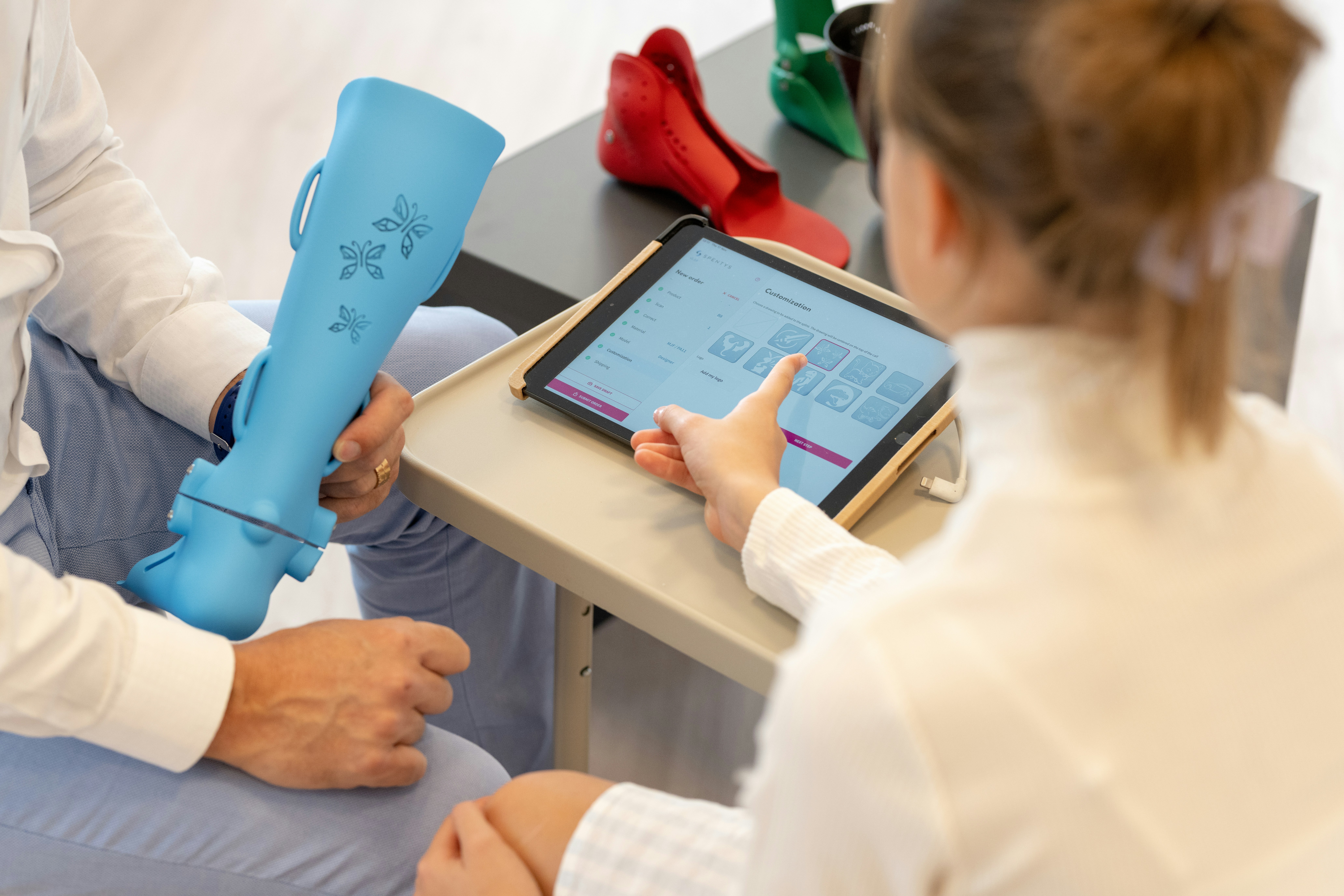Imagine managing your health from the comfort of your home, surrounded by loved ones, with innovative tools helping you stay healthier and independent. That’s no longer just a vision of the future; it’s rapidly becoming the reality of healthcare today.

An aging population and the rising demand for personalized care are driving the home healthcare industry to adapt and innovate.
By 2030, the U.S. home healthcare market is projected to reach $253.4 billion, according to Grand View Research, highlighting the seismic shift in how care is delivered.
Cutting-edge technology plays a key role in this transformation, benefiting both patients and caregivers. Telehealth, remote monitoring, AI, VR, wearable devices, and mobile-first solutions are reshaping what’s possible for at-home care, providing convenience, better outcomes, and cost savings.
Learn more about how these innovations are influencing home healthcare with valuable insights from the NCBI.
Here’s how these advancements are elevating at-home care and reshaping the healthcare landscape.
The Growth of At Home Care
At-home care is becoming a preferred choice for many, particularly older adults seeking comfort, familiarity, and independence.
Compared to traditional hospital visits, staying at home is often less stressful, more affordable, and allows families to be more involved in their loved ones' care.
But beyond convenience, this industry’s growth is fueled by innovation. Technology is helping patients manage their health, stay connected with doctors, and detect issues early all from the safety and comfort of their homes.
For hospitals and clinics, it eases the strain on overwhelmed facilities, freeing up resources for those who need them the most.
Key Technological Innovations Driving At Home Care

Healthcare organizations are leveraging technology to meet the rising demand for home-based services. Below are the innovations leading the charge:
1. Telehealth Services
Telehealth, once seen as a luxury, is now a mainstream solution for home care. Virtual medical appointments allow patients to connect with healthcare providers through video calls without leaving their homes. This trend, fast-tracked during the COVID-19 pandemic, has only continued to grow.
Telehealth is particularly helpful for medication reviews, mental health consultations, and follow-ups between in-person visits. It minimizes the need for unnecessary trips to emergency departments, particularly for vulnerable or mobility-challenged patients.
For caregivers, telehealth adds flexibility to schedules and improves continuity of care.By reducing hospital visits, telehealth not only saves time and money but also improves access for patients in remote or underserved areas.
Key Benefits:
● Quick access to specialists regardless of location.
● Regular follow-ups for chronic conditions, such as diabetes and hypertension.
● Minimized exposure to infections by reducing hospital visits.
Telehealth continues to grow in popularity, particularly for mental health consultations, medication management, and routine check-ups.
2. Remote Patient Monitoring (RPM)
Wearable devices and sensors are revolutionizing how doctors and caregivers monitor patients’ health. Remote patient monitoring offers real-time data on vital signs like blood pressure, heart rate, glucose levels, and oxygen saturation.
With this technology, caregivers can intervene sooner when complications arise, leading to better health outcomes. For instance, patients with chronic conditions like diabetes or heart disease can be monitored closely without making frequent hospital visits.
Additionally, wearable devices can track physical activity and sleep patterns, providing a more comprehensive picture of overall health.
For patients with Alzheimer’s or dementia, these devices even offer location tracking, improving safety and peace of mind for families.
Examples of RPM Devices:
● Continuous glucose monitors for diabetic patients.
● Smart ECG devices for heart disease management.
● Wearable trackers that monitor sleep patterns and daily activity.
Benefits:
● Improved health outcomes due to early detection of complications.
● Reduced hospital readmissions and emergency visits.
● Peace of mind for both patients and their loved ones.
3. Mobile-First Documentation
Caregivers often juggle extensive paperwork and outdated software, which can reduce the time they spend on patient interactions. Mobile-first documentation tools solve this problem by streamlining administrative tasks.
With a single app or platform, caregivers can manage medication schedules, update patient records, and communicate with doctors in real time. Streamlined workflows free up time for more one-on-one care, enhancing patients’ experiences and outcomes.
By investing in intuitive, mobile-enabled solutions, home healthcare organizations can improve efficiency and make caregivers' workdays more manageable.
Learn more: Top Healthcare Website Redesign Benefits
4. Artificial Intelligence (AI)
AI is a game-changer for both diagnosing conditions and improving long-term care planning. It can analyze vast amounts of data to identify trends and make predictive assessments, such as a patient’s fall risk or the likelihood of complications.
AI-powered chatbots and virtual assistants help patients manage medications, answer simple health questions, and send alerts if something seems amiss.
These tools ensure continuity of care between physical visits, providing support and reassurance for patients and caregivers alike.
For healthcare providers, AI optimizes diagnostic accuracy and treatment planning, offering a promising glimpse of what's to come in patient-centered care.
Key Applications:
● Virtual assistants to remind patients about medications or appointments.
● Predictive modelling to assess fall risks or potential complications.
● Chatbots for 24/7 health-related inquiries and guidance.
AI not only increases diagnostic accuracy but also improves care efficiency by allowing healthcare providers to allocate their time more effectively.
5. Virtual Reality (VR)
Virtual reality is emerging as a powerful tool for rehabilitation, particularly in physical therapy. Patients can now perform balance and mobility exercises with VR headsets, guided by instructions that make rehabilitation more engaging.
By gamifying therapy sessions, VR encourages patient participation and progress. For at-home physical therapists, it allows remote supervision and monitoring between visits, providing continuous care without being invasive.
VR is set to revolutionize how rehab is approached, offering patients a chance to recover in a way that’s interactive and tailored to their needs.
Examples in Use:
● VR headsets offering step-by-step guidance for mobility exercises.
● Interactive programs that improve balance and coordination for stroke patients.
● Cognitive therapy games for individuals with neurodegenerative disorders.
Benefits:
● Higher patient engagement during rehabilitation exercises.
● Remote monitoring of progress by physical therapists.
● Faster and more efficient recovery timelines.
6. Smart and Wearable Devices
Today’s home healthcare tools go well beyond your standard gadgets. Wearable health trackers monitor heart rate, activity levels, and even detect falls, sending alerts to emergency contacts if required.
Medicine dispensers help patients stick to prescribed schedules, while smart toilets can track hydration levels or spot signs of infection.
Additionally, robotic companions play a unique role by offering emotional support and reducing social isolation, which is common among seniors.
These robots can remind users to take medication, assist with household tasks, and even promote mental engagement through interactive features.
7. Same-Day Pay for Caregivers
With the increased demand for home healthcare services, retaining skilled caregivers has become a top priority.
Same-day pay solutions are emerging as a way to attract and motivate caregivers, ensuring they have financial stability and are more likely to remain committed to their roles.
By making these efforts, healthcare organizations not only support their staff but also ensure patients receive consistent, high-quality care.
The Benefits of These Innovations

The integration of advanced technology into at-home care brings significant advantages for both patients and caregivers:
● Improved access: Telehealth and remote monitoring ensure healthcare is accessible, even for those in remote areas.
● Cost savings: Patients avoid unnecessary hospital stays, and early interventions prevent expensive complications.
● Higher satisfaction: Patients benefit from personalized, comfortable care in their homes, while caregivers gain tools that simplify their workflows.
● Better outcomes: Wearables and AI provide data-driven insights for faster interventions and more effective treatments.
● Caregiver retention: Tools like mobile workflows and same-day pay help reduce burnout, keeping the workforce stable and productive.
Shaping the Future of Healthcare
With these powerful technologies, the potential for at-home care is limitless. Hospitals will no longer be the sole hub of advanced medical services. Instead, care will become decentralized, patient-centered, and data-driven.
AI, RPM tools, and VR are just the beginning of a revolution that’s empowering patients to take greater control of their health.
Similarly, smart systems and digital platforms make caregiving less about paperwork and more about meaningful interactions.
The future of healthcare technology promises more innovations that will enhance quality of life, streamline processes, and reduce costs.
By adopting these advancements today, home healthcare organizations are not only addressing the rising demand but also setting the stage for a more efficient and compassionate healthcare system.
The next era of healthcare isn’t about coming to the hospital; it’s about healthcare coming to you. With the right technology, staying healthy at home has never been more achievable.
FAQs - How Future Healthcare Technology is Elevating At Home Care
1. What is telehealth, and why is it important?
Telehealth enables virtual consultations with healthcare providers, helping patients access care without leaving their homes. It’s ideal for follow-ups, medication reviews, and mental health support, reducing trips to clinics and improving convenience.
2. How does remote patient monitoring (RPM) help patients and caregivers?
RPM uses devices to track vital signs like blood pressure, glucose levels, and heart rate. This real-time data allows caregivers to address issues sooner, improving patient outcomes and reducing hospital visits.
3. What role do wearable devices play in at-home care?
Wearables track health metrics such as activity levels, sleep patterns, and vital signs. They can also detect falls and send alerts, providing added safety and support for patients, especially seniors.
4. How is AI improving at home healthcare?
AI analyzes patient data to predict risks, optimize treatment, and offer reminders for medications. Virtual assistants powered by AI also enhance care continuity between visits by answering health-related questions and monitoring routines.
5. How does VR contribute to physical therapy at home?
Virtual reality is used in rehabilitation, offering engaging physical therapy exercises that patients can perform at home. Therapists can monitor progress remotely, making recovery more interactive and efficient.
6. How is technology improving the caregiver experience?
Tools like mobile-first documentation simplify administrative tasks, while same-day pay provides financial flexibility, boosting caregiver satisfaction. These advancements ensure caregivers can focus on delivering quality care.
Why Choose Our Services?
At New Web Order, we are committed to harnessing the latest in healthcare technology to transform at-home care.
Whether you’re a caregiver looking for better tools or a patient seeking personalised care, we have solutions tailored to meet your needs.
Contact Us Today to learn more about how we can support your healthcare goals with cutting-edge technology.
Final Thoughts
From telehealth to AI-powered diagnostics, the integration of future healthcare technology is not just enhancing at-home care but also making it more inclusive and efficient.
By leveraging these innovations, we have the opportunity to improve lives, reduce healthcare costs, and ensure everyone has access to high-quality care—right at home.


